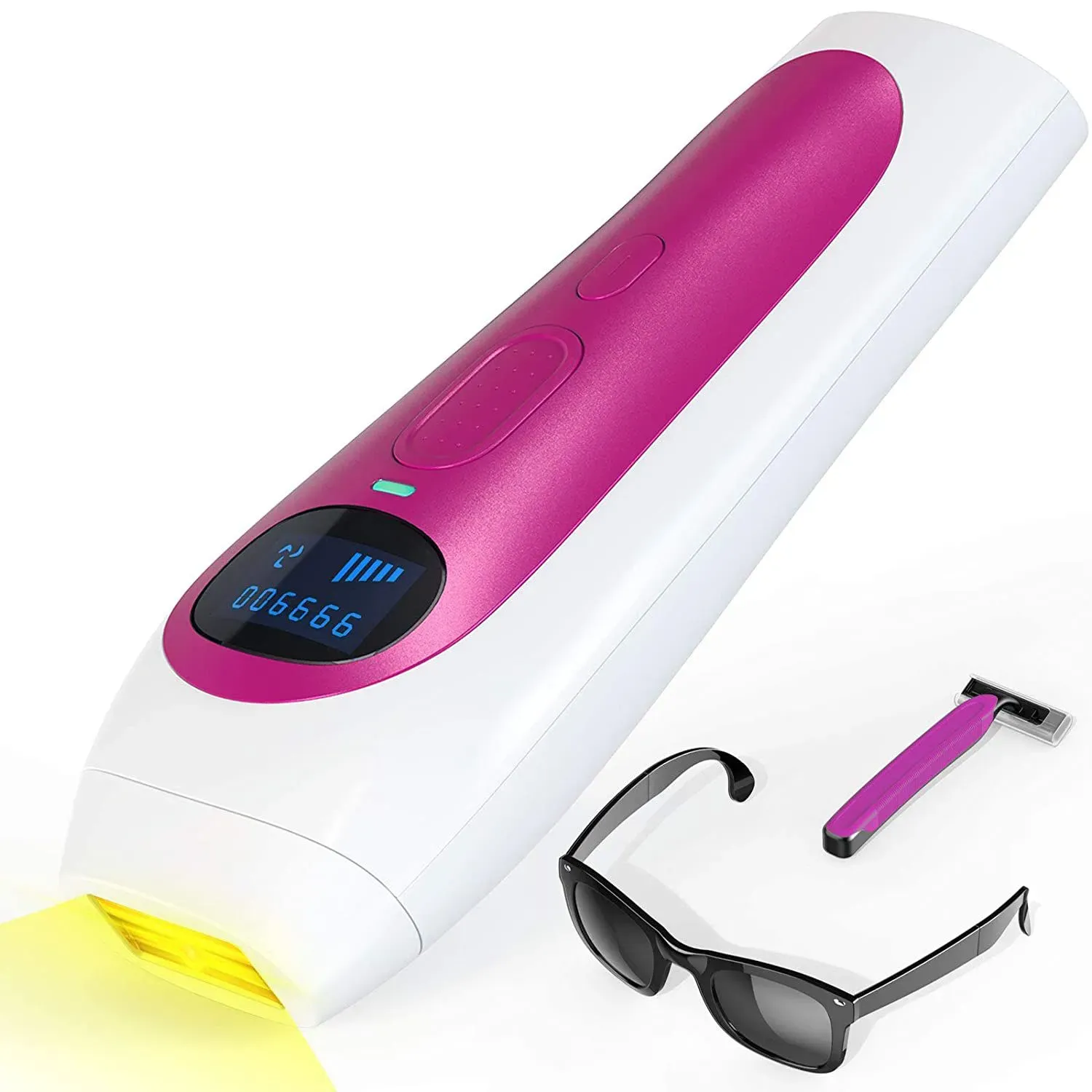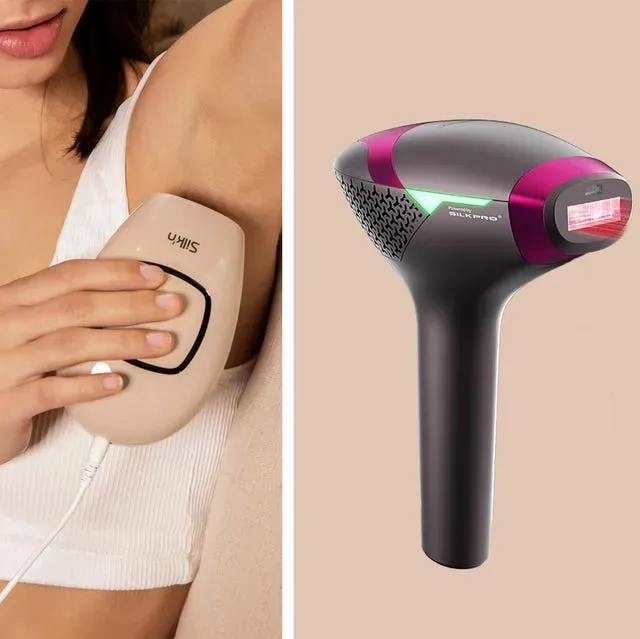Table of Contents
Tired of the endless cycle? Shaving nicks, waxing pain, those annoying stubbly days right after? You're not alone. The quest for smooth skin often feels like a part-time job no one signed up for. For years, professional laser hair removal seemed like the only real long-term answer, but the cost and time commitment were serious hurdles. Now, devices claiming salon results from your living room promise a different story. But with so many options flooding the market, figuring out the **best laser hair removal at-home** device feels like navigating a minefield. How do you know what actually works? What's safe? And is it really going to ditch the razor for good? This isn't about miracle cures or overnight transformations. It's about cutting through the noise to understand what these gadgets can realistically do, who they're best suited for, and which ones might actually be worth your cash and effort. We'll look at the tech, the features that matter, and help you decide if going pro at home is the right move for your smooth skin goals.
Understanding AtHome Hair Removal: Laser vs. Light

Understanding AtHome Hair Removal: Laser vs. Light
Sorting Out the Basics: What's Happening Under the Hood?
so you've seen the ads promising permanent hair reduction from a device that looks like a fancy futuristic gadget. The big question right away is often, "Is this *real* laser hair removal?" It's a fair question, because the market is flooded with devices, and not all of them use the same technology. Generally, when people talk about at-home hair removal devices that offer long-term results, they're referring to two main types: actual laser devices and Intense Pulsed Light (IPL) devices. Both work by targeting the pigment (melanin) in the hair follicle to damage it and slow down or stop future growth, but they go about it in fundamentally different ways. Understanding this difference is key to picking the right tool for your specific situation and managing expectations.
The Laser Approach: Precision Targeting
True at-home laser hair removal devices, much like the ones you'd find in a clinic, use a single, concentrated wavelength of light. Think of it like a highly focused beam. This specific wavelength is designed to be absorbed by the melanin in the hair follicle. When the light energy hits the melanin, it converts to heat, effectively zapping the follicle and inhibiting its ability to regrow hair. Because it's a single, precise beam, it's very good at targeting individual hairs. This precision can be a plus for smaller areas or detailed work. However, this method typically works best on individuals with light skin and dark hair, as the laser needs that contrast to effectively find and target the melanin without overheating the surrounding skin.
Feature | Laser | IPL (Intense Pulsed Light) |
|---|---|---|
Technology | Single, concentrated wavelength of light | Broad spectrum of light wavelengths |
Targeting | Precise, targets individual follicles | Less precise, targets broader area |
Effectiveness (Ideal Candidate) | High contrast: Light skin, dark hair | Best on light to medium skin tones, dark hair |
Treatment Area | Better for small, specific areas | Better for larger areas (legs, arms) |
Speed | Slower per area due to precision | Faster coverage of large areas |
Intense Pulsed Light (IPL): A Broader Spectrum
Now, let's talk about IPL. Despite often being lumped in with "laser" hair removal, IPL uses a broad spectrum of light wavelengths, like a flashbulb, rather than a single beam. This light is filtered to target melanin, but because it's a wider band of light, it's less precise than a true laser. The light energy is absorbed by the melanin in the hair and skin, turning into heat and damaging the follicle. IPL devices cover larger areas faster, making them popular for legs, arms, and backs. They can be less painful for some users compared to lasers. However, because the light isn't as focused, more treatments are often needed to achieve similar results compared to clinic-grade lasers. Like lasers, IPL relies on the contrast between hair and skin color, meaning it's also most effective on lighter skin tones with darker hair and generally not suitable for very dark skin or very light hair.
Choosing the Best Laser Hair Removal AtHome Device: What Matters Most

Choosing the Best Laser Hair Removal AtHome Device: What Matters Most
Picking Your Weapon: What to Look For
Alright, so you've got a handle on the tech – laser versus IPL. Now, wading into the actual market to find the **Choosing the Best Laser Hair Removal AtHome Device: What Matters Most** feels like trying to pick a single grain of sand on a beach. There are *so* many devices, all promising the world. Forget the fancy packaging for a second. The absolute first thing you need to nail down is whether a device is even suitable for your specific skin tone and hair color. This isn't just about getting results; it's about safety. Using the wrong device on your skin type can lead to burns, discoloration, or worse. So, before you get dazzled by flash counts or ergonomic designs, check the device's compatibility chart. If you have darker skin tones or very light/red/grey hair, many of these devices simply aren't designed for you, and trying to force it is a bad idea. Beyond that, consider the treatment area size – are you tackling large zones like legs or small spots like the upper lip? This impacts the speed and design you'll want.
Top Contenders in the Best Laser Hair Removal AtHome Arena

Top Contenders in the Best Laser Hair Removal AtHome Arena
Navigating the Market: Who's Actually Playing?
so you've done your homework on laser versus IPL and figured out what your skin and hair combo can handle. Now comes the fun part: looking at the actual gadgets. When you start digging for the **best laser hair removal at-home** devices, you'll quickly see a few names pop up repeatedly. Brands like Braun, Philips, and CurrentBody are pretty dominant in the IPL space, while Tria is one of the few offering actual diode laser technology for home use. It's easy to get overwhelmed by the sheer volume of models and marketing jargon. Do you need 999,999 flashes? Is "intelligent skin tone sensing" just a fancy phrase? It's about stripping away the fluff and looking at what users, and sometimes experts, actually say works.
The Heavy Hitters: Braun and Philips IPLs
If you've looked into at-home hair removal for more than five minutes, you've probably stumbled across Braun Silk Expert Pro and Philips Lumea. These are arguably the most popular IPL devices out there. They're known for covering large areas relatively quickly, which is a major plus if you're tackling legs or arms. Many models come with different intensity settings and skin tone sensors that adjust the light output automatically, adding a layer of safety. They typically require consistent use over several weeks to see noticeable results, and maintenance sessions are definitely part of the deal. Think of them as persistent workers rather than instant fixers. While they get a lot of buzz, remember they are IPL, not true lasers, and their effectiveness still hinges heavily on that light skin/dark hair contrast.
- Braun Silk Expert Pro 5: Often cited for its speed and skin tone adaptation.
- Philips Lumea Prestige: Comes with various attachments for different body areas.
- CurrentBody Skin IPL: Another popular option with different models available.
Considering True Lasers: The Tria Alternative
For those specifically seeking actual laser technology at home, the Tria Beauty hair removal laser is usually the name that comes up. This device uses a diode laser, similar to some professional machines, albeit at lower energy levels. The advantage here is the focused energy, which can be quite effective on suitable candidates. The downside? The treatment window is much smaller than IPL devices, meaning treating a large area takes significantly longer. It can also feel more intense, sometimes described as a rubber band snap. It’s less about speed and more about targeted power. It really depends on your priority – speed and coverage with IPL, or potentially more focused power with a home laser like Tria, provided your skin and hair are the right match. Before you invest, maybe check out hairawaybylaser.com for some comparison points on different technologies.
Getting Real Results from Your AtHome Device

Getting Real Results from Your AtHome Device
Setting Realistic Expectations
Alright, let's be brutally honest here. You didn't drop a few hundred bucks on one of these devices expecting to zap your legs once and wake up smoother than a baby dolphin. If that's your hope, you're going to be disappointed. **Getting Real Results from Your AtHome Device** is less about a magic wand and more about consistent effort. Think of it like going to the gym – you don't get biceps overnight. These devices work by damaging the follicle over time, and that takes multiple sessions. Manufacturers often throw out timelines like "noticeable reduction in 4 weeks," which can happen for some, but full, significant results? We're talking months, sometimes six months to a year or more, depending on the device, the area, and your individual hair growth cycle. And here's the kicker: it's hair *reduction*, not permanent *removal*. You'll likely need maintenance sessions down the road. Anyone telling you otherwise is probably trying to sell you something.
Mastering the Technique
So, you've got your device, you understand it's a process, now how do you actually use the thing to get the most bang for your buck? Technique matters, a lot. It's not just randomly flashing away. First off, clean-shave the area right before you treat it. The light needs to target the pigment in the follicle *under* the skin, not the hair sitting on top, which will just absorb the energy and potentially cause a burn or irritation. Don't wax, epilate, or pluck before treatment, because you need the follicle intact with the hair root inside for the device to work. Ensure the device makes good contact with your skin. If there are gaps, the light energy isn't getting where it needs to go. Overlapping slightly is fine, but don't flash the exact same spot multiple times in one session – that's just asking for trouble. Follow the recommended treatment schedule religiously; skipping sessions disrupts the process. Consistency is truly your best friend here.
Here’s a quick checklist before you start zapping:
- Shave the area thoroughly.
- Ensure skin is clean and dry (no lotions or oils).
- Perform a patch test if it's your first time or a new area.
- Use the correct intensity setting for your skin tone (check the manual!).
- Make sure the device head has full contact with the skin.
- Follow the specific pattern recommended by the manufacturer (e.g., gliding or stamping).
- Treat according to the recommended schedule (usually every 1-2 weeks initially).
Patience and Persistence
Look, there will be times you're halfway through treating your leg, your arm is tired, and you see minimal change, and you'll think, "Is this even doing anything?" It's easy to get discouraged. This is where patience kicks in. Hair grows in cycles (anagen, catagen, telogen), and these devices are most effective during the active growth phase (anagen). You're only hitting a portion of your hair follicles in that phase during any given treatment. That's why multiple sessions are necessary. If you're several weeks in and seeing zero change, double-check you're using the correct settings for your skin tone and that you're following the schedule precisely. Are you shaving properly beforehand? Is the device making good contact? If you've ticked all the boxes and still nothing after a few months, it might be that your hair/skin combination isn't ideal for that specific device, or perhaps home devices aren't strong enough for your particular hair type. Sometimes, despite doing everything right, the results just aren't as dramatic as the marketing suggests. It’s not a personal failure, just the reality of the technology.
Making Peace with the Process (and Your Device)
So, is finding the **best laser hair removal at-home** device the end of your hair removal saga? Maybe, maybe not entirely. These devices aren't instant magic wands, despite what some marketing might imply. They require commitment, consistency, and patience. You won't wake up hair-free tomorrow, or likely even next week. The key is managing expectations and understanding that results vary wildly depending on your hair, skin, and how religious you are with the treatment schedule. Think of it as a long-term project, not a quick fix. If you've done your homework, picked a device suited to your situation, and can stick with it, you might see a significant reduction. Just don't toss your razor in the trash the minute the box arrives.
